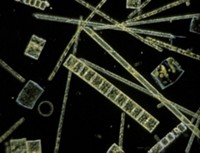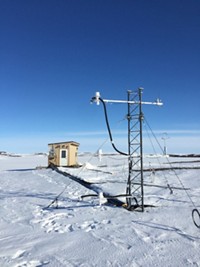Advertisement
Grab your lab coat. Let's get started
Welcome!
Welcome!
Create an account below to get 6 C&EN articles per month, receive newsletters and more - all free.
It seems this is your first time logging in online. Please enter the following information to continue.
As an ACS member you automatically get access to this site. All we need is few more details to create your reading experience.
Not you? Sign in with a different account.
Not you? Sign in with a different account.
ERROR 1
ERROR 1
ERROR 2
ERROR 2
ERROR 2
ERROR 2
ERROR 2
Password and Confirm password must match.
If you have an ACS member number, please enter it here so we can link this account to your membership. (optional)
ERROR 2
ACS values your privacy. By submitting your information, you are gaining access to C&EN and subscribing to our weekly newsletter. We use the information you provide to make your reading experience better, and we will never sell your data to third party members.
Environment
Iron And Sunlight Zap Methylmercury
Environmental Pollutants: Scientists uncover a mechanism for methylmercury's decomposition during the Arctic's long summer days
by Laura Cassiday
July 28, 2010

Scientists have long warned us that some salt-water fish, such as swordfish and tuna, contain high levels of the toxin methylmercury. Luckily for trout connoisseurs, most freshwater fish do not have the same problem. In mercury-contaminated lakes, sunlight triggers methylmercury decomposition, which helps prevent fish from accumulating dangerous levels of the chemical. Now researchers have identified the mechanism behind this photodecomposition in an Alaskan lake, and their results could suggest new strategies for cleaning up contaminated waters (Environ. Sci. Technol., DOI: 10.1021/es1006934).
Natural and man-made sources, such as fossil fuel combustion, spew mercury into the atmosphere. Through precipitation and river runoff, the chemical reaches lakes, where anaerobic bacteria convert elemental mercury into the more toxic methylmercury. Because of its stability, this chemical travels up the food web and accumulates in predatory fish.
Fortunately, sunlight destroys almost 90% of the methylmercury that enters Alaskan lakes each year, says environmental scientist Chad Hammerschmidt of Wright State University in Dayton, Ohio. In Arctic lakes, this photodecomposition occurs almost exclusively during the summer months, when ice melts and the sun shines continuously. But despite the process' prevalence, scientists know little about its mechanism.
Hammerschmidt and colleagues decided to tease apart how the reaction works by studying water samples from Toolik Lake in Alaska. They incubated the water in bottles at the lake's surface, so the persistent summer sun could irradiate the samples, and added chemicals that might disrupt the photochemical reaction. When the scientists added desferrioxamine B, an iron chelator, methylmercury decomposition rates dropped 10-fold. The reaction completely halted when they added millimolar concentrations of two hydroxyl radical scavengers, dimethyl sulfoxide and formic acid.
From these observations, the researchers concluded that iron and sunlight produce a methylmercury-busting hydroxyl radical through a process called the photo-Fenton reaction. "It's likely that this reaction also occurs in other freshwater systems," Hammerschmidt says, but it probably happens less frequently in the ocean because strong-binding ligands complex most of seawater's iron.
The study "take us another step closer to understanding sunlight degradation of methylmercury," says environmental engineer Heileen Hsu-Kim of Duke University. Hsu-Kim recently published similar work (Nat. Geosci., 3, 473 (2010)) that implicated singlet oxygen, rather than hydroxyl radical, in methylmercury photodecomposition. But Hsu-Kim notes that the two studies had different experimental conditions—her work analyzed simulated lake water—which could explain the discrepancy. Hammerschmidt adds that each lake's water chemistry could differ slightly, shifting the balance of photodecomposition reactions.
Understanding these reaction mechanisms could aid decontamination strategies in lakes and oceans. "Adding iron is one option, but it's usually light that limits the reaction," says Hammerschmidt. So, he says, reducing phytoplankton growth to allow more sunlight penetration may be the best management tool.




Join the conversation
Contact the reporter
Submit a Letter to the Editor for publication
Engage with us on Twitter